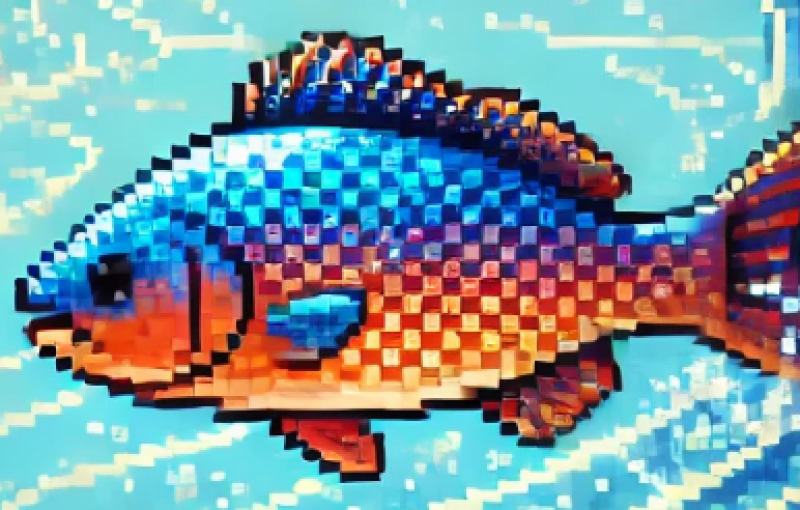
The Fish That Forgot Where Home Was: How Snapper Are Exposing a Coastal Crisis
by Jon Scaccia February 5, 2025Imagine you wake up one morning, and your house is gone. Not just moved or remodeled—completely vanished. You wander your old neighborhood, but everything is unfamiliar. The streets are wider, the buildings taller, and the trees that once lined your block are nowhere to be found. Eventually, you settle somewhere new, but deep down, you know it’s not home. Now, imagine this happening slowly over generations—so slowly that your grandchildren don’t even realize their home ever existed.
This isn’t science fiction. It’s exactly what’s happening to snapper (Chrysophrys auratus) in New Zealand’s coastal waters. A new study tracking 800 years of fish movement reveals that these marine wanderers have been quietly shifting their habitat preferences—not by choice, but because human activity has transformed their environment beyond recognition.
And here’s the kicker: Most of us don’t even realize it’s happening.
The Problem With Forgotten Pasts
Shifting Baselines Syndrome (SBS) is a sneaky problem. It happens when each new generation perceives the environment they grow up in as “normal,” even if it’s vastly degraded from centuries past. Because the change happens gradually, we fail to notice just how much we’ve lost. This is why many people today see a healthy coral reef as one covered in algae with a few fish darting around—when, in reality, past generations might have seen vibrant ecosystems teeming with life.
The snapper study used an ingenious method to cut through the fog of SBS: fish otoliths. These tiny ear stones record a fish’s life history, storing chemical clues about where they lived, much like the rings of a tree reveal its age. By analyzing otoliths from archaeological sites, historical fishery records, and modern samples, researchers pieced together an 800-year timeline of where snapper preferred to live.
The verdict? They used to love estuaries—calm, nutrient-rich nurseries where young fish could thrive. Today, they avoid them.
So, What Happened to the Snapper’s Nursery?
The snapper’s story isn’t one of simple wanderlust. Their habitat shift aligns almost perfectly with New Zealand’s history of land-use change. Early Māori settlers had an impact on the environment, but the real trouble began with European colonization and the industrialization of the 19th and 20th centuries. Deforestation, urban expansion, and agriculture sent waves of sediment rushing into estuaries, turning once-clear waters murky.
As sediments choked out crucial seagrass beds and increased turbidity, snapper nurseries became inhospitable. Juvenile snapper struggled to find food and avoid predators in these murky waters. Over time, they simply stopped returning.
Instead, they moved to higher-salinity habitats further offshore—a major shift that indicates a fundamental change in how these fish use coastal environments.
Why Should We Care?
A fish changing its home might not seem like a big deal, but this is a warning siren for entire ecosystems. Estuaries serve as crucial “fish daycares,” protecting juvenile marine life before they venture into the open ocean. When fish abandon these areas, it suggests the entire coastal food web is in trouble.
Worse still, because we see today’s fish behavior as “normal,” we don’t question whether something has gone terribly wrong. Fisheries managers set quotas based on current population estimates, but if those estimates are based on an already-degraded ecosystem, they could be dangerously optimistic.
And here’s where things get even more unsettling: What if this isn’t just a problem for fish?
If we’re underestimating changes in coastal ecosystems, how many other environmental shifts have we overlooked? Are today’s forests, rivers, or even human health baselines similarly skewed by slow-moving changes we’ve simply accepted as reality?
Can We Bring the Snapper Back Home?
The good news? Unlike climate change or biodiversity loss on a global scale, restoring estuaries is a challenge we can actually tackle. The researchers suggest that successful habitat restoration should aim to bring snapper back to their pre-industrial estuarine nurseries.
That means:
- Reducing sediment runoff: Stricter land-use policies and better farming practices could minimize the soil washing into waterways.
- Replanting coastal vegetation: Mangroves, seagrass, and wetlands act as natural filters, trapping sediments before they reach the water.
- Reassessing fishery management: If snapper aren’t using their historic nurseries, are we measuring population health correctly?
What’s Next?
The shift in snapper behavior is just one example of how human activity alters nature in ways we don’t always see. But now that we know the problem exists, we have a chance to correct it.
Reversing shifting baselines starts with awareness. We need to question whether the “normal” we see today is truly normal—or just the best we can remember. So, let’s challenge our assumptions, push for better conservation, and maybe, just maybe, help snapper find their way home.
What do you think?
- Have you ever noticed a gradual environmental change that others accepted as normal?
- What’s one small action you could take to help protect coastal ecosystems?
- If you could study any animal’s history through its bones, what would it be?
Drop your thoughts in the comments or share this blog with a fellow ocean lover. Let’s start the conversation!
Unlock Science Secrets:
Science is under threat, and your knowledge is your power. This Week in Science offers groundbreaking insights, revolutionary research, and transformative discoveries to arm you with the facts in an increasingly polarized world. Our free weekly newsletter is perfect for educators and science lovers alike. Don’t wait—subscribe now to deepen your understanding and stand with science. If you liked this blog, please share it—your referrals help us keep science accessible to everyone.
Leave a Reply